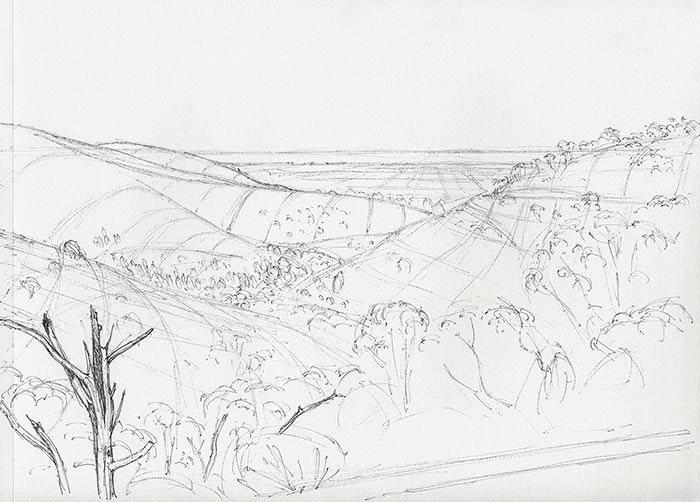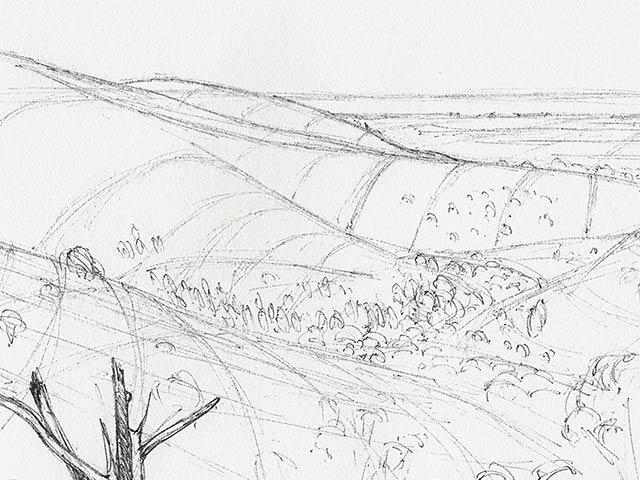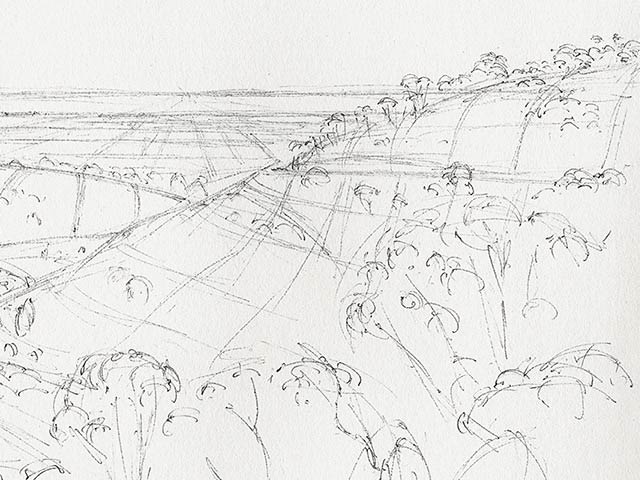29.5 cm (w) x 21 cm (h), black biro on cartridge paper.
Date produced: 24th March 2000
This was drawn on-site, on the side of Greenhill Road, up in the Adelaide Hills. I was keen to express the large interlocking land forms seen within this view. Beyond the hills are the Adelaide Plains and then the sea. This is a large view that (I find) feels fabulous to enjoy when one is really there.
The 3-dimensional nature of the view is a very important part of enjoying this view (and in enjoying most views, I suspect). Much of this comes from having stereo vision - viewing the world through two eyes, providing the brain with slightly different views that are then processed to give us a very powerful perception of form and space. This powerful perception of form and space is even more powerful as we move through space (such as when we walk, or enjoy the view from inside a moving vehicle). It is during such movements in space, that makes me realise just how quickly our brains can process this information. From my experiments into stereo photography, I have realised that an accurate sense of 3-dimensional space and form only occurs if both images are perfectly synchronised - that is, both the left eye information and right eye information are seen at exactly the same time. How is this achieved by our bodies? How can our brain process both the images coming from our eyes at exactly the same time (and do this type of processing seemingly continuously)? Remarkable!
You can see the importance of the 3-dimensional space in a landscape when you view back a photograph of the same landscape. They lack the depth and ‘feel’ of the real landscape. A photo of a flat open desert is a good example. You don’t get to feel the size and vast space that is out there. Producing flat 2-dimensional images means that the 3-dimensional spaces can only be indicated, or expressed using things like relationships of colours. Real 3-dimensional spaces and forms can’t be synthesised on a single flat image. Much of the work in interpreting 3-dimensional space and form from a flat image has to be done by the viewer. I believe that an artist has to provide enough information and enough incentive to encourage viewers to make the effort. I have applied imaginary grids over the land forms to help express their forms.
The outer edge of one of the main roads through the hills can be seen along the bottom of the drawing (it is largely obscured by the top of the cliff that I am standing on). This road then winds around the side of this large land mass, and can be seen running around the mass on the right of the view through to the sea.
| 


